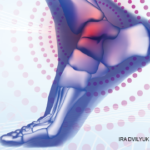

It’s the high cost of hospital real estate, stupid. That’s what I keep telling myself whenever I vainly search for a convenient, lengthy corridor that my patients can pace. In their zeal to maximize every possible square foot of space, hospital architects have all but eliminated those dated, boxy hallways that lead to nowhere. No matter. I need a long passageway! Despite all the advances of modern medicine, gauging how someone saunters down a hallway can speak volumes about the state of their health. You get to see your patient in motion. Are they hobbling along in pain? Is their stride too short or too long? Does their body sway to and fro? Having them parade around your cubbyhole can be an exercise in futility. After all, taking four consecutive steps in most hospital exam rooms will direct your patient headfirst into an immovable structure, such as a desk, an exam table or a wall.
Too often, physicians skip over this critical part of the musculoskeletal exam. Feeling pressed for time, some are looking for corners to cut in their brief office visits. Trying to stay on schedule, they are searching for some precious time when they can enter all the requisite—though often meaningless—data points into the patient’s ever expanding electronic record. Others may naively believe that having the patient lying supine on an exam table and rotating their hips or flexing their knees is sufficient to assess a complex weight-bearing activity, such as walking. One former colleague even challenged the idea of marching a patient down an open hallway as a possible violation of their privacy rights as defined by the Health Insurance Portability and Accountability Act (HIPAA). Because heavy fines or even jail time face HIPAA violators, the mere sound of this acronym strikes fear in our hearts. So far, I haven’t heard about any rheumatologists being led away in handcuffs.
Gait Still Matters
Despite the emergence of several useful scoring systems to assess functional status, watching how a patient walks is always far more informative than reading their self-characterization of their locomotor abilities in a health assessment questionnaire. A viewing is worth a thousand words.
This was patently clear when I recently met two new patients with rheumatoid arthritis (RA) whose chief concern related to their progressive difficulty walking. Margaret was a middle-aged woman with a lengthy history of RA that, until recently, had been reasonably controlled with a combination of drugs. Lately, she had noticed that she was starting to stumble when she walked. She felt as though she were drunk. Her occasional stumbles multiplied to the point that she could no longer safely leave her home. Her rheumatologist speculated that her decline must have been the consequence of having a severe peripheral neuropathy related to her RA. However, she could not recall how her doctor established this diagnosis. The rheumatologist neither tapped her reflexes nor referred her for any electrical studies of peripheral nerve function. She most certainly did not ask Margaret to walk.
